Underlies various Country United States Parent range California Coast Ranges | Other shale Primary Schist, Sandstone, Basalt | |
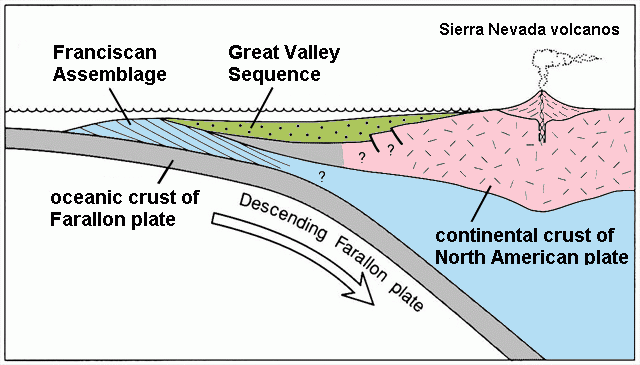 | ||
Type varied; primarily metamorphic (low grade), but also sedimentary, igneous and high-grade metamorphic Overlies basement; Coast Range Ophiolite in some areas Region California Coast Ranges, northern Transverse Ranges | ||
The franciscan assemblage
Franciscan Assemblage or Franciscan Complex is a geologic term for a late Mesozoic terrane of heterogeneous rocks found throughout the California Coast Ranges, and particularly on the San Francisco Peninsula. It was named by geologist Andrew Lawson, who also named the San Andreas fault that defines the eastern extent of the assemblage.
Contents
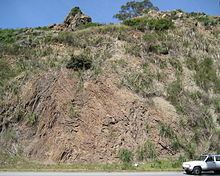
Easily identified by its red-green color (sometimes dark blue) and furrowed, twisted appearance, the assemblage is usually characterized as being primarily metamorphic in nature, its most well-known rocks being serpentine schists. However, the assemblage contains a wide range of different rocks in different stages of the rock cycle. A single outcrop may contain basalt, chert, and other rocks in addition to schist.
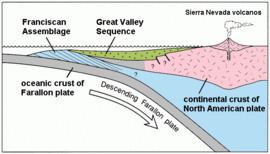
The outcrops of the formation have a very large range, extending from Douglas County, Oregon to Santa Barbara County, California. Franciscan-like formations may be as far south as Santa Catalina Island. The formation lends its name to the term describing high-pressure regional metamorphic facies, the Franciscan facies series.

Description
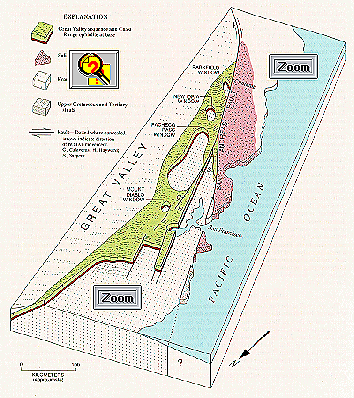
These rocks - which are also known as the Franciscan Complex, Formation, Series, or Group - include mafic volcanic rocks (basalt), many of which are altered to greenstone, radiolarian cherts, greywacke sandstones, limestones, serpentinites, shales, and high-pressure metamorphic rocks, such as blueschist. Although most of the Franciscan is Late Jurassic through Cretaceous in age (150-66 Ma), some Franciscan rocks as young as Miocene (15 Ma), and as old as early Jurassic (180-190 Ma) age are known. Following deposition, these rocks were then faulted, folded and mixed in a seemingly chaotic manner. Due to the lack of continuous exposures and the complex folding and faulting, it is impossible to use conventional methods to estimate the thickness of the assemblage. However, various arguments can be made that at least 50,000 feet (15,240 m) of sediment are present.
Geologic history

Franciscan rocks are thought to have formed prior to creation of the San Andreas Fault when an ancient deep-sea trench existed along the California continental margin. This trench, most of which is no longer evident, resulted from subduction of oceanic crust of the Farallon tectonic plate beneath continental crust of the North American Plate. As oceanic crust descended beneath the continent, volcanic rocks, mainly basalt, making up the lower plate, and marine sediments deposited on top of it were scraped off and accreted (i.e., added) to the leading edge of the overriding plate. This resulted in widespread deformation with development of thrust faults and folding. Ophiolite (which weathers to serpentine), and rocks altered by high-pressure metamorphism (such as blueschist) were emplaced during this episode. Deformation and emplacement continued during subsequent creation of the San Andreas fault to result in a complex chaotic assemblage of diverse rock types that some refer to as a mélange.
Fossils
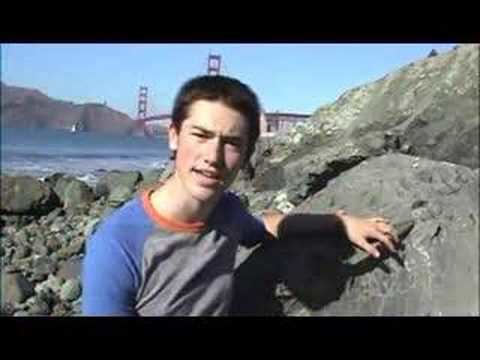
Franciscan sediments contain a sparse, but diverse assemblage of fossils. The most abundant fossils by far are microfossils, particularly in the cherts, which contain single-celled organisms called radiolarians that have exoskeletons of silica. There are also in some of the shales microfossils of planktonic foraminifera that have exoskeletons of carbonate. These microfossils, by and large, indicate deposition in an open-water setting where deep-water conditions exist. Vertebrate fossils in the Franciscan are extremely rare, but include three Mesozoic marine reptiles that are shown in the table below. Again, these indicate an open-water, and therefore deep-marine setting. Although rare, a few shallow-marine fossils have been found as well, and include extinct oysters (Inoceramus) and clams (Buchia). Microfossils in the Calera Limestone member of the Franciscan exposed at the Permanente and Pacifica cement quarries also indicate a shallow-marine setting, with deposition on top of a seamount in the tropical Pacific Ocean and subsequent transport and accretion by the Pacific Plate onto the California continental margin. Thus, even though most of the Franciscan appears to have been deposited in a deep-water setting, it is a complex and diverse assemblage of rocks, and shallow-water settings, though not the norm, existed as well.
Economic importance
Although no significant accumulations of oil or gas have been found in the Franciscan, other opportunities have been exploited over the years. During the 19th century when gold mining was one of the main industries in California, cinnabar associated with serpentine in the Franciscan was mined for quicksilver (mercury) needed to process gold ore and gold-bearing gravels. Some of the more important mines were those at New Idria and New Almaden, the Sulphur Bank Mine at Clearlake Oaks, and the Knoxville Mine (cf. McLaughlin Mine) and others at Knoxville. The Franciscan also contains large bodies of limestone pure enough for making cement, and the Permanente Quarry near Cupertino, California is a giant open-pit mine in a body of Franciscan limestone that supplied most of the cement for building the Shasta Dam across the Sacramento River. The Rockaway Beach Quarry at Pacifica is another example of a major limestone quarry in the Franciscan.
